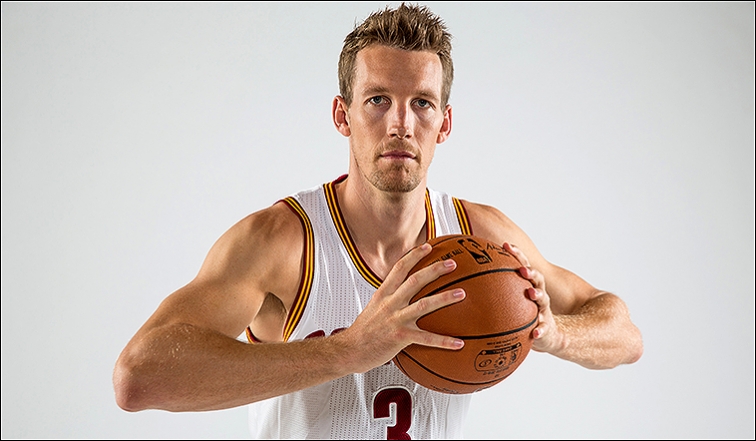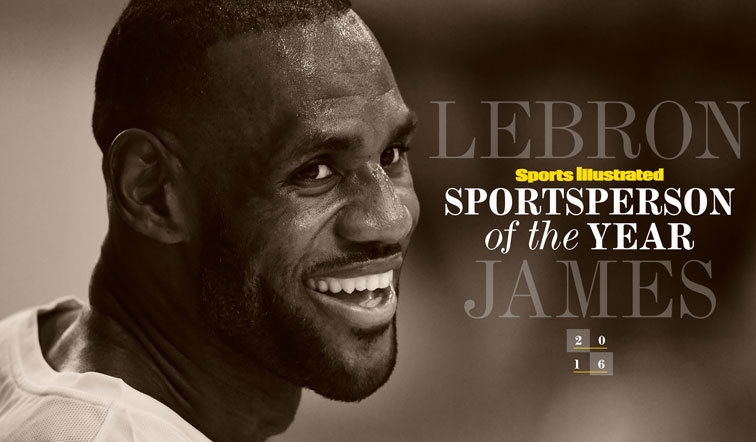
Sticking With Mike Dunleavy
2016-12-01
With the 2016-2017 NBA season quickly nearing the first quarter pole, the Cleveland Cavaliers have been playing as well as any team in the league thus far. At 13-3 with a two-game lead in the Eastern Conference, the NBA Champions have carried over their momentum from last season, and are playing inspired, confident basketball. There are very few concerns at Cleveland Clinic Courts right now.
However, even very few concerns mean there are some concerns. First and foremost—outside of the defense, but we’ll get to that another time—among many who follow the Cavs seems to be the play of swingman Mike Dunleavy Jr.. Brought in to help space the floor and give the Cavaliers even more depth on the wing, Dunleavy is shooting just 35% from the field, and 28% from beyond the arc. On a team that seems more comfortable playing with one another than ever before, Dunleavy’s discomfort sticks out like a sore thumb. Many are worried that, at 36 years old, and coming off a season marred by a back injury, his days as an effective NBA player may be over. While that is possible, there are several possible reasons for why Dunleavy’s production is down, and even more reasons why the Cavaliers need to continue to stick with him.
https://www.youtube.com/watch?v=SYevCNm3m_8
Changing Role
Besides age and injuries, Dunleavy is playing a far different role for the Cavaliers than he had for the Chicago Bulls over the last few seasons. Dunleavy is currently averaging 16.5 minutes per game and has started just one of the 13 games he has appeared in. By comparison, he played between 22 and 31 minutes per game during his three seasons in Chicago, while starting 154 of the 186 games he played in. With the Bulls and other teams he had played for previously, Dunleavy spent much of the time coming off screens, but also had opportunities to use his underrated floor game. Both of these things helped Dunleavy get within a rhythm. With the Cavaliers, Dunleavy is almost exclusively a spot-up shooter on the perimeter who occasionally cuts to the basket. While some may see this role as easier, it’s not the one Dunleavy is familiar—and therefore more comfortable—with. That’s not to say the Cavaliers should give Dunleavy a larger role in the offense, but they do need to give him time to adjust to his new role.
https://www.youtube.com/watch?v=tFRSnz3sf14
History of Success
It’s one thing to be skeptical when a player such as Jordan McRae struggles during his time on the court. McRae is a volume scorer who wasn’t able to make a Philadelphia 76ers team that was the worst in the league last season. He has one impressive performance on his NBA resume’, and that’s been offset by a startling lack of efficiency while playing for the Cavaliers in summer league, pre-season games, and in the early regular season. It’s understandable why the Cavs took a chance on McRae—they lack young talent and he was playing well in the D-League—but he just might not be an NBA player.
Mike Dunleavy is a completely different animal. With over 900 games over 15 seasons to his credit, Dunleavy has been a solid to very good player throughout his career. He’s not quite the knock-down three-point shooter some think he is, as evidenced by his 37.5% career mark from beyond the arc, but with over 1200 made threes for his career to go along with a double-digit scoring average, as well as a reputation as an underrated passer and defender, Dunleavy has proven that he can help any team.
Other Options
There seems to be a narrative that Dunleavy’s minutes should be easy to fill, but that likely isn’t the case. Tyronn Lue has given McRae a chance, but he has been one of the worst players in the league by any metric. Despite shooting well from deep last season in the D-League, DeAndre Liggins has yet to attempt a three in 76 minutes this season, a negative given this team’s style of play. Despite clamoring from fans, Lue doesn’t seem to think Kay Felder is ready for a spot in the rotation, and he’s the one who sees practice every day. James Jones has played well, but hasn’t been nearly as versatile or strong defensively as Dunleavy over the course of their careers. The Cavaliers could go bigger and give Chris Andersen some run, but they have committed to their current style of offense, and at 38 years old, Andersen will likely only be used in certain matchups or when a regular rotation player has the night off. As far as a trade goes, it’s unlikely that Dunleavy could fetch anything other than another struggling veteran unless his play improves, and then the point would be moot. Throwing in McRae and the contract of Mo Williams gives the Cavaliers more salary to vote with, but nothing in terms of additional value on the court.
He Isn’t Alone
While the struggles of others don’t excuse Dunleavy’s own play, he isn’t the only Cavalier wing struggling right now. J.R. Smith is currently shooting just 30% from the floor and 33% from deep, while Richard Jefferson is shooting 40% from the field and an anemic 23% from deep. So why are these men being given a pass by the fans? Because we’ve seen them both perform enough to be confident that they will bounce back, and they most certainly will. Perimeter shooting is streaky by nature. Meanwhile Dunleavy doesn’t have that same cache’ with Cavalier fans, and that’s understandable. After all, the casual fan knew Dunleavy simply from when he played the Cavs, and he often killed them. When they traded for him, expectations for Dunleavy were high, and he hasn’t met them yet. But like Smith and Jefferson, Dunleavy has had a long and successful NBA career, and deserves more time to find himself in his new role before anyone—the fans, coaching staff, or front office—simply writes him off as a veteran at the end of his rope, i.e. Shawn Marion and Mike Miller two seasons ago.
Some Signs of Improvement
While Dunleavy continues to struggle, there is some evidence that he is starting to come out of it. Over the last five games he’s played in, Dunleavy is shooting 42% from the field and 31% from three. This isn’t what the Cavaliers are looking for, but it is an uptick over his percentages to start the season, and could be a sign that he is beginning to adjust to his new team and role. He’s also shooting 50% on two-point attempts for the season, which is above his career average of 48%. This means that he is still doing as well around the basket as before, and that his previous levels of efficiency should return with his three-point stroke. While he did have some poor seasons in terms of outside shooting in the first half of his career, Dunleavy has shot at least 38% from three in each of the previous six seasons, reason to believe his shot should return as long as he continues to get opportunities.
The next few weeks will be interesting for Mike Dunleavy Jr. and those who follow him. It could become obvious that his days as an effective NBA player are indeed over. He could also turn things around, causing us to wonder what we were so worried about. Regardless of what happens, the play of Mike Dunleavy will have a definite effect on not only what the Cleveland Cavaliers do on the court, but any future personnel moves they may make this season.



Mike Dunleavy, IMO, is fit to be a 3rd stringer for a contending team, that is how he is always been.
I ask again, why is a warriorsfan telling us how we are supposed to feel about our players? Isn’t there a warriors blog somewhere?
Take your nap, Cols!
He or she is not a fan of the team. Doesn’t watch the Cavs games or follow their news like a Cavs fan. I don’t see how his or her opinion should be tolerated.
Do you go on warriors boards and proclaim their players to suck? I do not BECAUSE I”M NOT A WARRIORS FAN
Good piece Mike. I imagine back surgery is one of the tougher things to come back from for an NBA player, and combining that with attempting to fit in with a new team with a new scheme probably makes it harder. Agree with you that he’ll come around, just like JR and RJ will as the season progresses. As long as these guys are on an upward trend, that’s all that really matters…
Also, it’s not just the fans who are clamoring for more Killer Shrimp… @CavsDan also seems to be campaigning…
Yeah I think the key is just to make sure he’s healthy. If he’s healthy, he’s still going to be able to produce. If he’s got nagging injuries this could be a Marion situation. Nice post, Mike
FROM THE FAMOUS WORDS (WHO WE ARE HONORING THIS WEEK ) OF COACH VALVANO—-“DON’T GIVE UP ….DON’T EVER GIVE UP “…………DUN”GIVE UP “LEAVY…..DON’T EVER GIVE UP……HE WILLL COME AROUND !!
Yep